NVIDIA’s GeForce GTX 480 and GTX 470: 6 Months Late, Was It Worth the Wait?
by Ryan Smith on March 26, 2010 7:00 PM EST- Posted in
- GPUs
Image Quality & AA
When it comes to image quality, the big news from NVIDIA for Fermi is what NVIDIA has done in terms of anti-aliasing of fake geometry such as billboards. For dealing with such fake geometry, Fermi has several new tricks.
The first is the ability to use coverage samples from CSAA to do additional sampling of billboards that allow Alpha To Coverage sampling to fake anti-alias the fake geometry. With the additional samples afforded by CSAA in this mode, the Fermi can generate additional transparency levels that allow the billboards to better blend in as properly anti-aliased geometry would.
The second change is a new CSAA mode: 32x. 32x is designed to go hand-in-hand with the CSAA Alpha To Coverage changes by generating an additional 8 coverage samples over 16xQ mode for a total of 32 samples and giving a total of 63 possible levels of transparency on fake geometry using Alpha To Coverage.
In practice these first two changes haven’t had the effect we were hoping for. Coming from CES we thought this would greatly improve NVIDIA’s ability to anti-alias fake geometry using cheap multisampling techniques, but apparently Age of Conan is really the only game that greatly benefits from this. The ultimate solution is for more developers of DX10+ applications to enable Alpha To Coverage so that anyone’s MSAA hardware can anti-alias their fake geometry, but we’re not there yet.
So it’s the third and final change that’s the most interesting. NVIDIA has added a new Transparency Supersampling (TrSS) mode for Fermi (ed: and GT240) that picks up where the old one left off. Their previous TrSS mode only worked on DX9 titles, which meant that users had few choices for anti-aliasing fake geometry under DX10 games. This new TrSS mode works under DX10, it’s as simple as that.
So why is this a big deal? Because a lot of DX10 games have bad aliasing of fake geometry, including some very popular ones. Under Crysis in DX10 mode for example you can’t currently anti-alias the foliage, and even brand-new games such as Battlefield: Bad Company 2 suffer from aliasing. NVIDIA’s new TrSS mode fixes all of this.

Bad Company 2 DX11 Without Transparency Supersampling
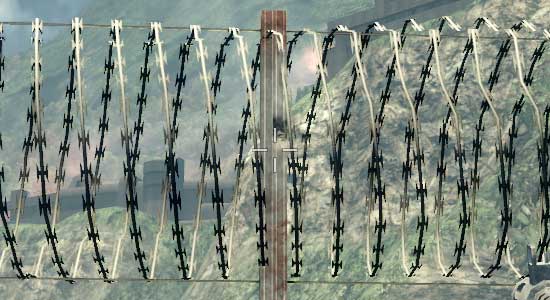
Bad Company 2 DX11 With Transparency Supersampling
The bad news is that it’s not quite complete. Oh as you’ll see in our screenshots it works, but the performance hit is severe. It’s currently super-sampling too much, resulting in massive performance drops. NVIDIA is telling us that this should be fixed next month, at which time the performance hit should be similar to that of the old TrSS mode under DX9. We’ve gone ahead and taken screenshots and benchmarks of the current implementation, but keep in mind that performance should be greatly improving next month.
So with that said, let’s look at the screenshots.

| NVIDIA GeForce GTX 480 | NVIDIA GeForce GTX 285 | ATI Radeon HD 5870 | ATI Radeon HD 4890 |
| 0x | 0x | 0x | 0x |
| 2x | 2x | 2x | 2x |
| 4x | 4x | 4x | 4x |
| 8xQ | 8xQ | 8x | 8x |
| 16xQ | 16xQ | DX9: 4x | DX9: 4x |
| 32x | DX9: 4x | DX9: 4x + AAA | DX9: 4x + AAA |
| 4x + TrSS 4x | DX9: 4x + TrSS | DX9: 4x + SSAA | |
| DX9: 4x | |||
| DX9: 4x + TrSS |
With the exception of NVIDIA’s new TrSS mode, very little has changed. Under DX10 all of the cards produce a very similar image. Furthermore once you reach 4x MSAA, each card producing a near-perfect image. NVIDIA’s new TrSS mode is the only standout for DX10.
We’ve also include a few DX9 shots, although we are in the process of moving away from DX9. This allows us to showcase NVIDIA’s old TrSS mode, along with AMD’s Adapative AA and Super-Sample AA modes. Note how both TrSS and AAA do a solid job of anti-aliasing the foliage, which makes it all the more a shame that they haven’t been available under DX10.
When it comes to performance, keep in mind that both AMD and NVIDIA have been trying to improve their 8x MSAA performance. When we reviewed the Radeon 5870 back in September we found that AMD’s 8x MSAA performance was virtually unchanged, and 6 months later that still holds true. The performance hit moving from 4x MSAA to 8x MSAA on both Radeon cards is roughly 13%. NVIDIA on the other hand took a stiffer penalty under DX10 for the GTX 285, where there it fell by 25%. But now with NVIDIA’s 8x MSAA performance improvements for Fermi, that gap has been closed. The performance penalty for moving to 8x MSAA over 4x MSAA is only 12%, putting it right up there with the Radeon cards in this respect. With the GTX 480, NVIDIA can now do 8x MSAA for as cheap as AMD has been able to
Meanwhile we can see the significant performance hit on the GTX 480 for enabling the new TrSS mode under DX10. If NVIDIA really can improve the performance of this mode to near-DX9 levels, then they are going to have a very interesting AA option on their hands.
Last but not least, there’s anisotropic filtering quality. With the Radeon 5870 we saw AMD implement true angle-independent AF and we’ve been wondering whether we would see this from NVIDIA. The answer is no: NVIDIA’s AF quality remains unchanged from the GTX200 series. In this case that’s not necessarily a bad thing; NVIDIA already had great AF even if it was angle-dependant. More to the point, we have yet to find a game where the difference between AMD and NVIDIA’s AF modes have been noticeable; so technically AMD’s AF modes are better, but it’s not enough that it makes a practical difference
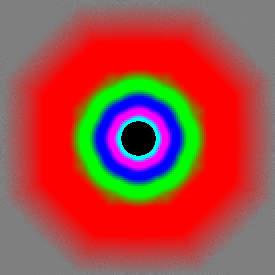
GeForce GTX 480

GeForce GTX 285
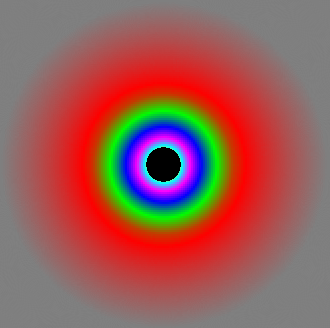
Radeon 5870


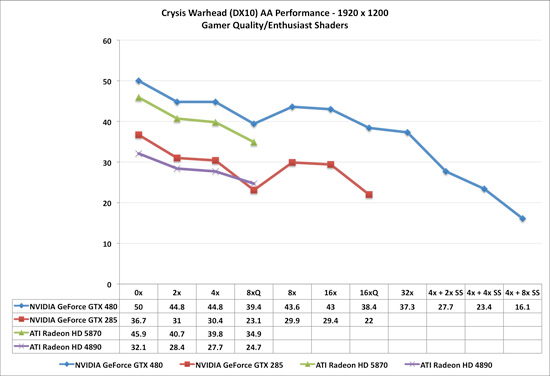
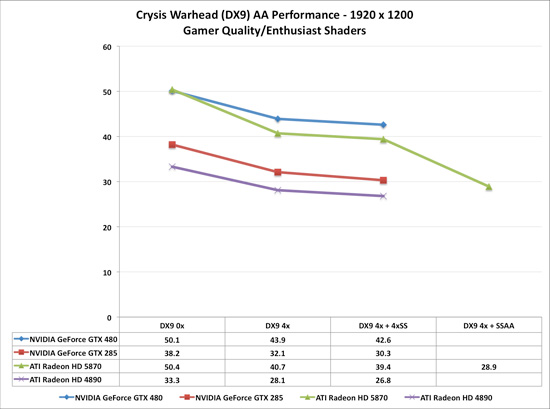








196 Comments
View All Comments
mcnabney - Friday, March 26, 2010 - link
You make the most valid point.As long as the consoles are in the driver's seat (this isn't going to change) DX11 and the features it provides won't be widely found in games until the next generation of consoles - in 2-3 years.
So really, without growth in the PC gaming market these is no need to upgrade from the last generation. Too bad really.
GourdFreeMan - Friday, March 26, 2010 - link
Thank you for listening to our feedback on improving your test suite of games, Ryan. I think your current list much better represents our interests (fewer console ports, a selection of games that better represent the game engines being used in current and future titles, fewer titles with GPU vendor bias, inclusion of popular titles that have staying power like BF:BC2, etc.) than the one you used to review the 58xx's when they were released. The only title that I feel that is missing from our suggestions is Metro 2033. Kudos!yacoub - Friday, March 26, 2010 - link
Good review. The grammar errors are prolific, but I guess this was rushed to release or something.So it's a hot, power-hungry card with a high pricetag. Not too surprising.
Would have liked to see a $150-range Fermi-based card sometime this year so I can ditch my 5770 and get back to NVidia, but the high temps and prices on these cards are not a good sign, especially comparing the performance against the 5800-series.
AznBoi36 - Saturday, March 27, 2010 - link
Fanboy much?yacoub - Saturday, March 27, 2010 - link
Fanboy of what?The ATI card I have now that I can't wait to get rid of?
The desire for NVidia to release something competitive so I can get back to a stabler driverset and remove all traces of ATI from this PC?
mcnabney - Saturday, March 27, 2010 - link
Ah yes, get back to Nvidia whose last trick was releasing a driver that turned off GPU fans causing instant-card-death.With 480, turning off the fan might actually start a fire.
Headfoot - Monday, March 29, 2010 - link
I bet you experienced that fan error IRL right?Just like how everyone who owned a Phemon got a TLB error 100% of the time right?
numberoneoppa - Friday, March 26, 2010 - link
You know you have the best tech site around when a product review makes it seem like a ddos is in progress.As far as the review itself, it's very comprehensive, so thanks Ryan! The new NVIDIA cards seem to be just where most people thought they would be. It really makes me anticipate the next HD58xx card and the AMD price cuts on the current line up that will come with it.
Devo2007 - Friday, March 26, 2010 - link
Great review, although you may want to edit this sentence:"NVIDIA meanwhile had to deal with the fact that they were trying to produce a very large chip on a low-yielding process, a combination for disaster given that size is the enemy of high yields."
Shouldn't it be "large size is the enemy of low yields?" Either way, that end point seems a bit redundant.
SlyNine - Saturday, March 27, 2010 - link
No, Large size would be a friend of low yeilds. low yeilds are our enemy.